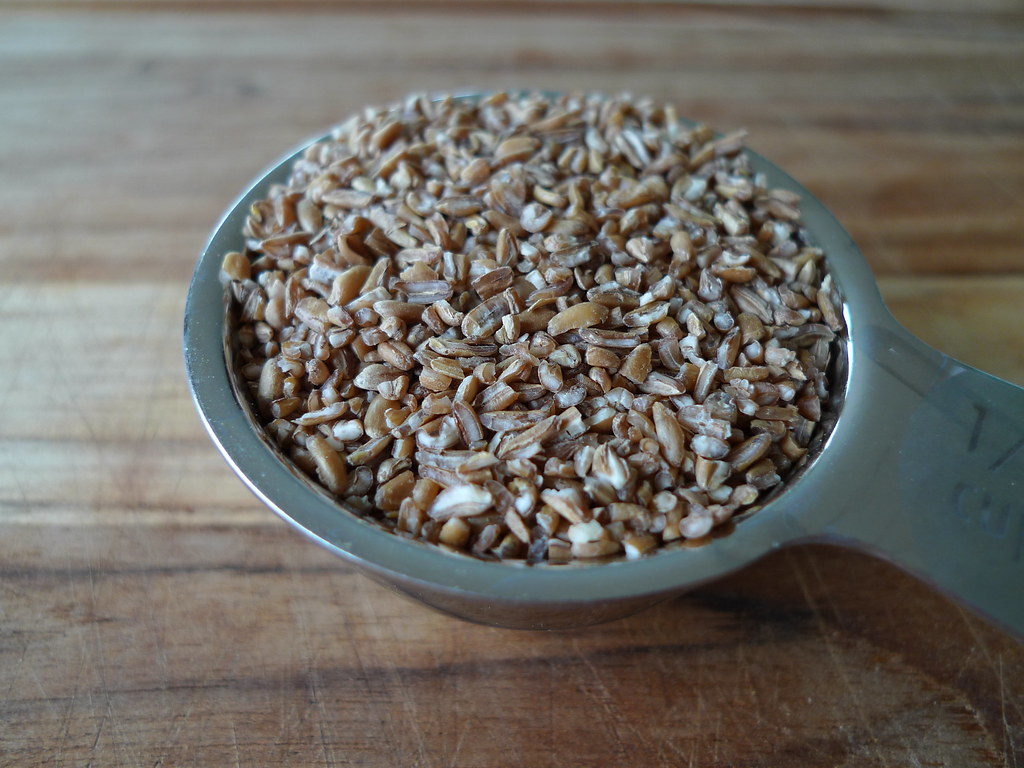I’ll admit, bulgur doesn’t sound like the most appetizing food. It kind of sounds like “vulgar,” the chances are good that you’ve probably never heard of it so I don’t blame you if you’ve never tried it. I was scared of bulgar before I had it for the first time. I thought it would be super complicated to make, with tons of steps, soaking and draining. But fear not. I discovered bulgur is actually really easy to make and it’s a great alternative when you get sick of rice. And if you’re a broke uni student like me, I know you’re sick of rice. But first, what is bulgar?
What Is Bulgur?

Bulgur is really like any other grain. Think of quinoa, rice, barley—I’d group it in with that family. But more specifically, bulgur is a whole grain that’s partially boiled and cracked. Unfortunately, it isn’t gluten-free, but it is vegan and packed with vitamins and minerals like iron, potassium, and fiber.
Because of the fiber content, this unusual grain is also really good for digestion. If you tend to bloat easily or if you’re constipated, add some bulgur into your diet to get things moving along. Another upside is it’s on the list of low glycemic index foods. That means it won’t cause a spike in your blood sugar, so it’s a good option for those with diabetes.
How to Make Bulgur

Because bulgur is probably a new ingredient for many, you should know how easy it is to make. Like any other type of grain, you’ll want to start with a two-to-one ratio of water to bulgur. Bring it to a boil and then let the grain simmer for 10-12 minutes. You might have to drain some liquid out after, but that’s perfectly normal. Like quinoa, the bulgur will absorb most of the liquid and almost triple in size.
If you’re not much of a chef—I’m talking to those of you who almost burn down the kitchen boiling pasta—this is the grain for you. Another common way to prepare bulgur is to soak it. You can simply pour water over the bulgur (you’ll probably want to go for a one-to-one water to wheat ratio) and let it sit overnight or all day. You can then squeeze out the liquid and you’ll have the perfect grain for a tabbouleh salad.
Salads are definitely the most common use of bulgur. Tabbouleh is probably the most popular bulgur salad. It’s a Mediterranean salad made from mixing the bulgur with parsley, tomato, lemon juice and usually some mint and onions. It’s the perfect, refreshing summer salad or side. But bulgur can be used in recipes you make every day. For example, you can sub bulgur for your morning oatmeal recipe for a heartier meal.

Or try this fresh bulgur summer salad with cantaloupe if you’re feeling adventurous. If you’re not a salad person (because, honestly, who’s a salad person?) You can mix bulgur into a burger patty. Try these thick and flavorful bulgur and chili bean burgers for a meal that won’t have you missing meat at all. Really, you can incorporate bulgur into any dish where you would normally have rice, oats, barley or quinoa. Think side dishes, grain bowls, soups, salads, breakfast. The options are endless.
The biggest challenge I find with living on my own is finding ways to switch up my meals and diversify my carbs. Bulgur is an awesome way to add a new twist to my boring routine and get all the good nutrients my body doesn’t get from midnight pizza runs.


